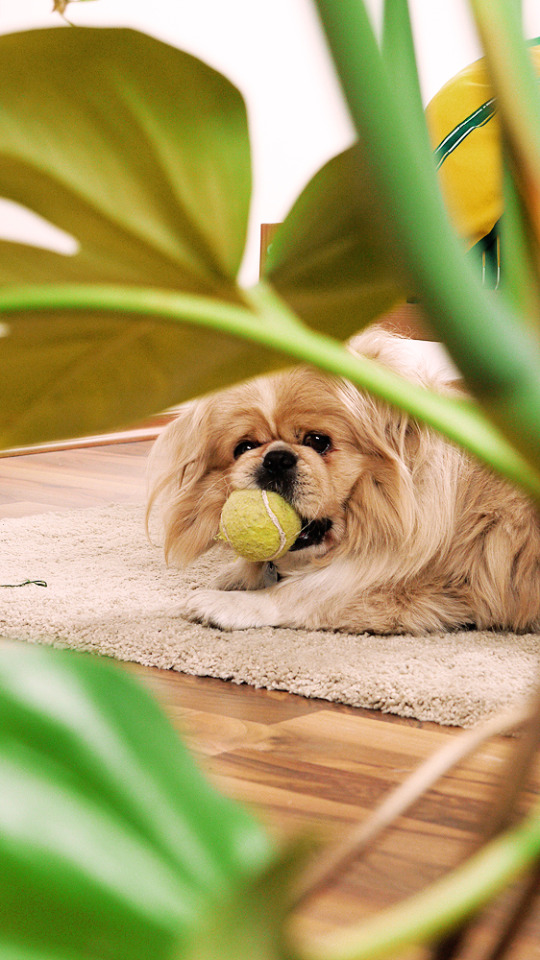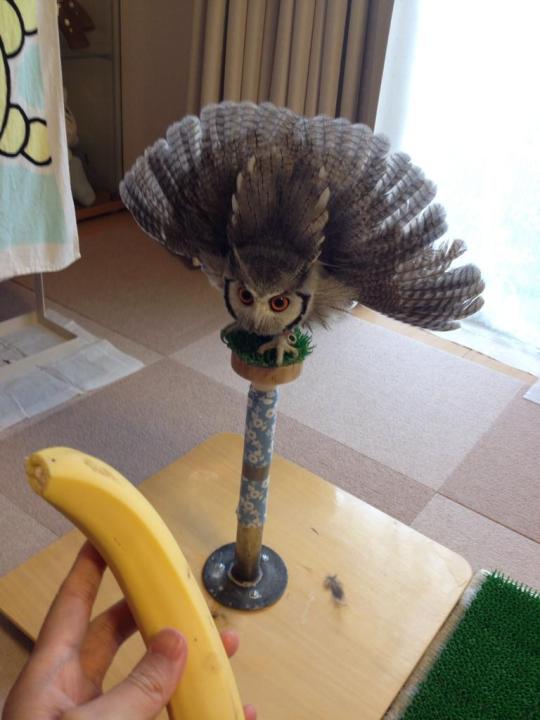Hey, hey, hey. Just a lady named Phoenix doing life the only way I know how. I'm artistic, eclectic, and a little lost.
Don't wanna be here? Send us removal request.
Link
Does this ring a bell?
The crowd gathers outside and is tense with anticipation as it makes its way to the paddock (your front porch).
The field is lined up.
Ding dong…
“And, they’re off.”
“Out of the gate is Fido, pacing ahead of Suburban Woman.”
“From the back, it’s Fifi, a long shot, but picking up the pace.”
“Rounding the turn, it’s Fido, with Suburban Woman picking up momentum, and Fifi a length behind.”
“Down to the wire, it’s Fido, but Suburban Woman is closing in!”
“It’s Fido crossing the threshold, and the crowd goes wild…”
… and so does Suburban Woman who is trying to get Fido and Fifi to stop celebrating on her guests.
Are you Suburban Woman, loving but exasperated owner of Fido and Fifi? Does your home seem like the 5th at Santa Anita every time the doorbell rings? Wouldn’t it be wonderful if your dog actually moved away from the door when the doorbell rang rather than crowd you for a position to greet, or “eat,” the people on the other side? Wouldn’t you love to have a dog that sits, lies down, or even runs to another room when the doorbell rings—instead of all the embarrassing things your dog currently does?
Rather than wishing and hoping your dog will just stop going crazy, or trying to wrestle your dog away from the door every time you have a visitor, place your bet on a sure thing by training your dog for this situation. With some effort and a commitment to practicing with your dog, completing this doorbell game will make you feel like you have just won the Daily Double.
Keep reading
49 notes
·
View notes
Text
Overweight dogs
Note: when it comes to humans, all bodies are good bodies. There is no right or wrong way to have a body. I myself am fat and proud, and I am in no way suggesting that anyone should change their own body, or that it is my place to comment on your health.
If you are human, you are self-reliant. You have control over your own diet and exercise routine and your body size is nobody’s business but your own. Dogs do not have this freedom and therefore it is important that, as their caretakers, we allow them to maintain the healthiest weight possible for them.
In a recent US survey, it was found that 52.5% of companion dogs were overweight. (link)
For dogs, the health problems associated with being overweight are:
Diabetes
Damage to joints, bones, and ligaments (about 25% of overweight dogs develop serious joint complications)
Arthritis
Hip dysplasia (especially a problem for big dogs, and breeds with a genetic disposition to this, such as german shepherds)
High blood pressure and heart disease
Difficulty breathing
Heat intolerance
Liver disease
Digestive disorders
Skin and hair problems
Increased risk of cancer
Being overweight reduces a dog’s life expectancy and the quality of their life. It limits their ability to run around, play, chase things, and to move around without pain.
(link)
If you are the caretaker for a dog, it is your responsibility to ensure that they maintain a healthy weight.

Ideally, you should be able to feel your dog’s ribs without having to press down. They should have a slight waist when seen from above, and their tummy should be slightly higher up than their rib cage. They should not have any fat rolls.
What to do if your dog is overweight
First, they need to go to the vet. Have them weighed and discuss your dog’s ideal weight and a food plan for them.
Next, stick to a healthy food plan. This isn’t about starving them or giving them less energy than they need in order to lose weight quickly. Doing that would be very dangerous. Do not give them treats of fatty or sugary foods.
Create some portion control by not free-feeding your dog. Give them two or three meals per day. You can make meals something to work for with food-dispensing toys or puzzle bowls. (link) (link) (link) (link)
The level of exercise required for a dog depends on their breed and age.
Working dogs like herders and scent hounds need at least one 60-90 minute high-intensity session per day, but two is better.
Terriers should get at least 60 minutes of exercise daily.
Sight hounds (like greyhounds) have surprisingly low exercise needs. As they are sprinters, they should get a couple of hard sprint workouts per week. I’d also recommend a daily leisurely walk.
Toy breeds should have a daily walk plus one play session per day.
Brachycephalic dogs are not designed for exercise. Their short muzzles impede airflow and prevent them from regulating their body temperature. On their daily walks, watch them carefully. Use a harness to walk them, not a collar. Keep a dish and bottle of water with you and offer them a drink regularly. Don’t take them out on hot days. (link)
(link)
Dogs need to be walked daily, for mental stimulation as much as physical. For athletic dogs, a walk doesn’t count as exercise. They need to run. Good examples of activities for dogs:
Running on the lead. You can even do this with your bike with a bit of training and the right equipment. (link)
Chasing a ball or frisbee is a great way to get your dog running if you aren’t up to joining in. You can increase your throwing distance with a tennis racquet or a ball thrower. (link) (link) A real fetch-loving dog can even learn to entertain themself with an automatic ball-thrower! (link)
If they are sociable with other dogs and you trust them to come back to you, take them to the dog park or a dog-friendly beach and simply let them go!
Take your dog somewhere that they can swim. Have them chase a ball into the water if they don’t just swim about on their own.
If you have someone to help you, play a back-and-forth game with your dog. Stand a good distance apart and take it in turns to call the dog to you, preferably while running away a bit to get them to want to chase you. Randomly give them a food reward and always give them lots of praise. This game is good exercise and doubles as obedience training.
Play tug-of-war with your dog, but be careful, and only do it if they already know a “drop it” command. (link)
Have your dog chase a laser pointer. Remember to never point them at your dog, especially in their eyes. (link) (link)
Teach your dog a little agility. This is great mental and physical exercise and it’s also great bonding time for the two of you. (link)
Remember that if your dog is overweight, it may be difficult or even painful for them to exercise, so be careful and considerate. Don’t forget to keep water freely available when exercising.
216 notes
·
View notes
Note
Do you have any advice for keeping dogs calm in crowded areas?
Your first step when a dog is stressed (excitement counts when a dog no longer responds to commands) is to ask yourself if it’s necessary for the dog to be in that environment. If it’s possible to reduce how often a dog is in crowded areas, that’s your first step. There may be alternate routes you can take or times you can go for smaller crowds. Most vets will accommodate crowd-stressed dogs by either careful scheduling or going straight to an exam room.
Tools like a thundershirt (a shirt with gentle pressure to calm the CNS) or a thundercap (basically a semi-opaque mask that reduces visual stimulation) can be helpful, but consider them as just a tool. Managing stimulus is just one component of responsible handling.
Next, consider why your dog is stressed–that determines what direction to go with your training priorities. Are they showing signs of fear? Are they in a hunting mode? Are they over-excited? Are they over-stimulated?
For fear, always prioritize keeping them away from that situation. If possible, they should only be in a crowd when counterconditioning and you should remove the dog before they get close to a threshold response. Once you get to the point of sub-threshold response you could begin on generalization but I would urge you to focus your training time on continued counterconditioning. It is absolutely possible to countercondition a dog to the extent that they no longer fear their old trigger.
For hunting mode, see a behaviorist. This is especially important if you ever see your dog go into a hunting stance directed at a child. Generalization (basically teaching a dog that ‘sit’ means ‘sit’ even when there are squirrels nearby) is a great tool but it’s important to err on the side of caution with aggression/prey drive behaviors. Punishment is not your friend with prey drive–the goal should be to teach your dog to choose to respond to you instead of their target and you can’t do that effectively with aversives.
For over-excitation/over-stimulation, habituation (learning that something has neither positive nor negative consequences and eventually no longer responding) is your goal. I find that generalization is one of the more time-effective ways of accomplishing that. My preferred method is taking a command my dog follows very well (minimum 95% response) and introducing distractions like a ball bouncing by or me doing jumping jacks or being in a new place. By adding distractions, you’re reinforcing that a) the commanded behavior is still rewarded and functions the same way even if the environment changes (i’ve heard this called proving or proofing) and b) lots of different things can be distractions, which teaches a dog that that is the “general” rule If you have a lot of free time, you can also experiment with finding gradually more stimulating environments and spending time doing a neutral activity.
Many easily-excited dogs could benefit from more mentally and physically stimulating activities and environments. This can be a walk around a block, teaching a new trick, puzzle toys, agility, running around the house, more play, etc. My dog is a wreck in public if I don’t give him sub-threshold stimulus throughout the day (a random combination of walking a few miles, agility, counterconditioning, puzzles, and games (he’s really good at Find It)). If you’re not sure they have enough activity, try adding a few activities that are appropriate for your dog’s age and skill level (e.g. a puppy should not risk joint development problems by running or walking long distances, a dog with no puzzle experience will be frustrated by a difficult puzzle).
-naabeyaakig
6 notes
·
View notes
Note
Can you expand on why it's not possible to reinforce fear? I've always learned that, for example, you shouldn't cuddle a dog who's scared during a thunderstorm because he'll learn that his fear reaction is good.
This is a pretty common misconception, and really it comes down to the difference between behavior and emotion, and operant versus classical conditioning.
Classical conditioning alters involuntary behaviors. Reflexes, physical reactions, that kind of thing. Think Pavlov’s dogs. Emotion (fear, in this case) falls under that umbrella.
Operant conditioning alters voluntary behavior. If you teach your dog that they get a treat for sitting, that’s operant conditioning.
So, when you properly reward a behavior, it becomes more common in the case of operant conditioning - i.e. voluntary behavior. You can’t make fear more common by rewarding it, because fear is involuntary. In fact you can do the opposite with classical conditioning, which is what you see in the video of the Jack Russell.
Here’s a good bit of writing on the subject of reinforcing fear
https://www.patriciamcconnell.com/theotherendoftheleash/you-cant-reinforce-fear-dogs-and-thunderstorms
And here’s a quote from it:
Here’s the example for you of how hard it is to “reinforce” fear. What if someone tried break into your home in the middle of the night? Let’s say they did, and after the intruder left, a friend or loved one sat down with you on the couch, brought you tea and gave you a hug. Would the tea and sympathy make you more likely to be afraid if it happened again the next night? Of course not.
Essentially, because fear is involuntary, a dog can’t decide ‘A ha! I got pats when I was scared the other night, so I’m going to be scared right now so I get more pats’.
This is especially true because fear is inherently aversive. Your dog wants to feel safe waaay more than he wants to be patted, so he’s never going to experience fear for the sake of cuddles.
There are a bunch of other great articles on the subject you can find pretty easily with a google search.
-UH
301 notes
·
View notes
Note
So I was wondering, what is so wrong with Cesar Millans training techniques? For some reason all of tumblr seems to hate him, and I can't, for the life of me, figure out why? His techniques work. He doesn't hit the dogs, I don't see obvious abuse.. So help me out here. What's so wrong?
First of all. Yes he does hit dogs. And kicks them. And don’t tell me he doesn’t because he does. You can skirt around it using buzz words like “touch” and “energy” but it’s a hit. It’s positive punishment - applying an aversive to suppress behaviour, especially aggressive behaviour, which is often caused by anxiety. And it’s not okay. It is abusive.
The Five Freedoms of Animal Welfare stipulate that animals must be free from pain and fear. Cesar Millan’s techniques, especially with aggressive dogs, rely on aversives, which cause pain and discomfort and stress. And that’s not okay.
His methods are highly aversive and can exacerbate or even cause aggression. They revolve around intimidation, pain and coercion and are highly stressful for dogs. They result in shut-down, miserable dogs often with chronic stress.
The highest frequency of aggression occurred in response to aversive (or punishing) interventions, even when the intervention was indirect:
• Hitting or kicking the dog (41% of owners reported aggression)• Growling at the dog (41%)• Forcing the dog to release an item from its mouth (38%)• “Alpha roll” (forcing the dog onto its back and holding it down) (31%)• “Dominance down” (forcing the dog onto its side) (29%)• Grabbing the jowls or scruff (26%)• Staring the dog down (staring at the dog until it looks away) (30%)• Spraying the dog with water pistol or spray bottle (20%)• Yelling “no” (15%)• Forced exposure (forcibly exposing the dog to a stimulus – such as tile floors, noise or people – that frightens the dog) (12%)
In contrast, non-aversive methods resulted in much lower frequency of aggressive responses:
• Training the dog to sit for everything it wants (only 2% of owners reported aggression)• Rewarding the dog for eye contact (2%)• Food exchange for an item in its mouth instead of forcing the item out (6%)• Rewarding the dog for “watch me” (0%)
(source) (CM uses 1, 3, 4, 5, 6, 7, a version of 9, and 10 extensively. (x)
Also:
He employs an archaic ideology that all misbehaviour is caused by dogs trying to assert their dominance. Which is WRONG, WRONG, WRONG. This crap has been disproved countless times. Dogs are not trying to achieve world domination jfc
His methods have been condemned by veterinary behaviourists, animal behaviourists and animal welfare groups.
He sets the dogs off deliberately for the show. Seriously. He sets them up for failure and then punishes them for reacting. That’s not ethical and it compromises welfare.
Here’s some handy dandy links for you to read because I have gone over this so many times and I feel like a broken record at this point:
Up to date information on wolf pack structure by top wolf biologist L. David Mech:
Alpha Status, Dominance, and Division of Labor in Wolf Packs
Whatever Happened to the Term Alpha Wolf?
Information on dog training and dog behavior and why Cesar’s methods are outdated and ineffective (many of these articles are by vets and certified animal behaviorists) :
Cesar Millan, Dominance Theory and Modern Dog Training
The Dog Whisperer Controversy
The Dog Whisperer: Frequently Asked Questions
Modern Dog Training vs. Cesar Millan
The Dominance Controversy and Cesar Millan
From Andrew Luescher, DVM, Veterinary Behaviorist
Veterinary Behaviorists Take a Stand Against Cesar Millan
dog training gone bad - Debra F. Horwitz, DVM, DACVB
I’m not sure why people are even trying to defend Cesar Millan on that slide for my animal welfare presentation(which got really popular wowie did not expect that). I explain very clearly what learned helplessness is. I put a picture of a dog in a state of shut-down with Millan leaning over it and grinning like it’s the best thing ever. And people are still defending him and don’t see an issue with it. Take off those blinkers and look.
4K notes
·
View notes
Photo

Little earrings = big news. Turquoise and lapis Gravitation earrings are back in stock! Pamelalovenyc.com #pamelalove (at pamelalovenyc.com)
530 notes
·
View notes
Photo

Perfect is very boring, and if you happen to have a different look, that’s a celebration of human nature, I think. If we were all symmetrical and perfect, life would be very dull.
228 notes
·
View notes
Photo


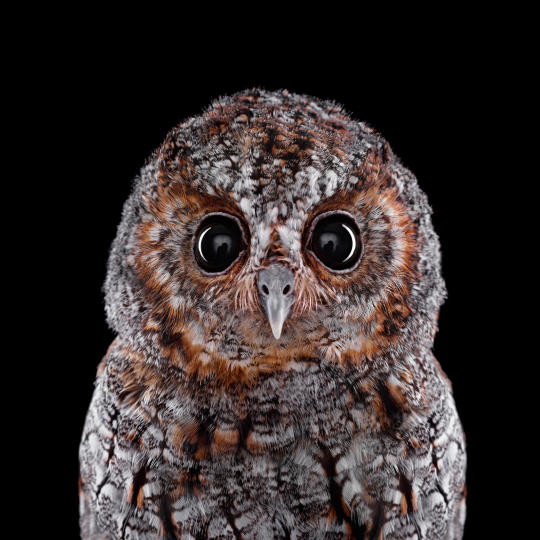
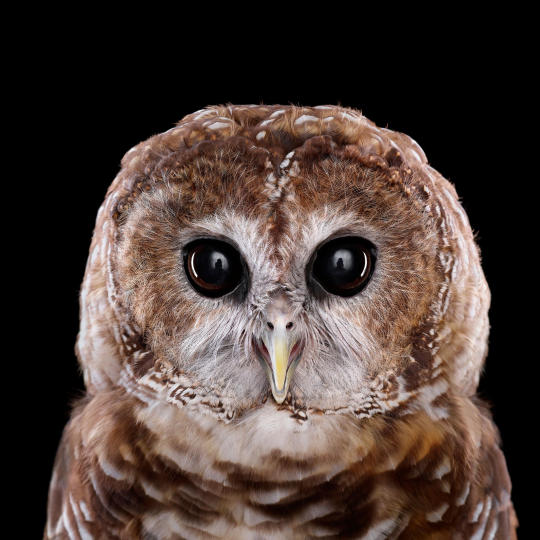

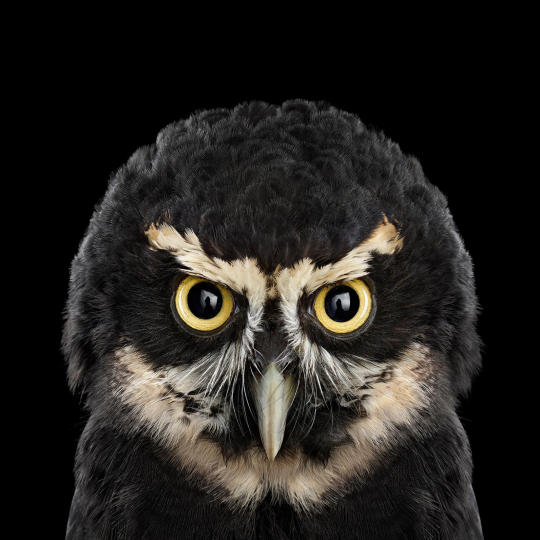
//our beautiful world..
It’s not easy to get owls to mug for the camera. Even in captivity the birds remain aloof, unruffled by the flash and unmoved by attempts to bribe them. Photographer Brad Wilson learned that lesson firsthand after trying to win over owls from the World Bird Sanctuary in St. Louis and The Wildlife Center near Española, New Mexico. He spent hours with each bird, trying to capture its direct gaze. “It’s hard to get animals to look at you like humans do,” he says. “That shot became my holy grail.
13K notes
·
View notes
Quote
- Buy lace underwear and model it around at home. You’re a goddess, own it. - Realize the fact that if somebody can’t see your virtues doesn’t it mean you don’t have them. - Pamper yourself. Fill the bathtub with hot water, throw in a bath bomb, jump in, play some music and enjoy. Exfoliate your skin, wash your hair, use a hair mask. Don’t dare to leave the bathroom till you’ve polished every single inch of your body. Try to polish your soul too. - Remember situations you faced in the past. Realize they’re not a big deal anymore. That bad anxiety you had two months ago suddenly seem so small you might just want to laugh for being so silly, and now it’s over all those tears you cried are the most pointless thing ever. This will happen over and over again, so next time you face a problem remember in a year from now it will be insignificant. - Go for a walk on your own. Walk aimlessly without a finish line. Come back home when you’re tired, no need to hurry. - Doodle. Maybe you think you’re doing not so great at living but your watercolors skills are still on point. - Buy yourself flowers. This one needs no explanation. - Clean bed sheets are always a good idea. - Stare at yourself in a mirror after a long nap and admire how glowing, beautiful and dreamy your face looks. Naps work wonders. - In fact, stare at yourself on a mirror daily. Each time compliment on something. Maybe today you like your hair but don’t enjoy the shape of your lips, but that’s ok because tomorrow you’ll be delighted at how cute your smile is even tho your hair might be a mess. Learn to love you. - Bake cookies just to eat with your fingers the remaining cookie dough. Everybody knows that’s the best part of baking. - Forgive yourself.
Tips for people who feel lost (via saltaconmigo)
353K notes
·
View notes
Photo

Albino Screech Owl - Eastern Morph by Quincy the Matchmaker
177K notes
·
View notes
Photo




Chris Pine after John Legend and Common performed their Oscar-winning song 'Glory' at the 87th Annual Academy Awards
1K notes
·
View notes
Audio
21K notes
·
View notes
Conversation
What You Crave vs What You Need
Chocolate: some dick
Soda/Carbonated Drinks: some dick
Chips/Salty Food: some dick
Cookies: some dick
Sweet Tea: some dick
Pasta/Carbs: some dick
Ice: some dick.
I see no lies.
389K notes
·
View notes

